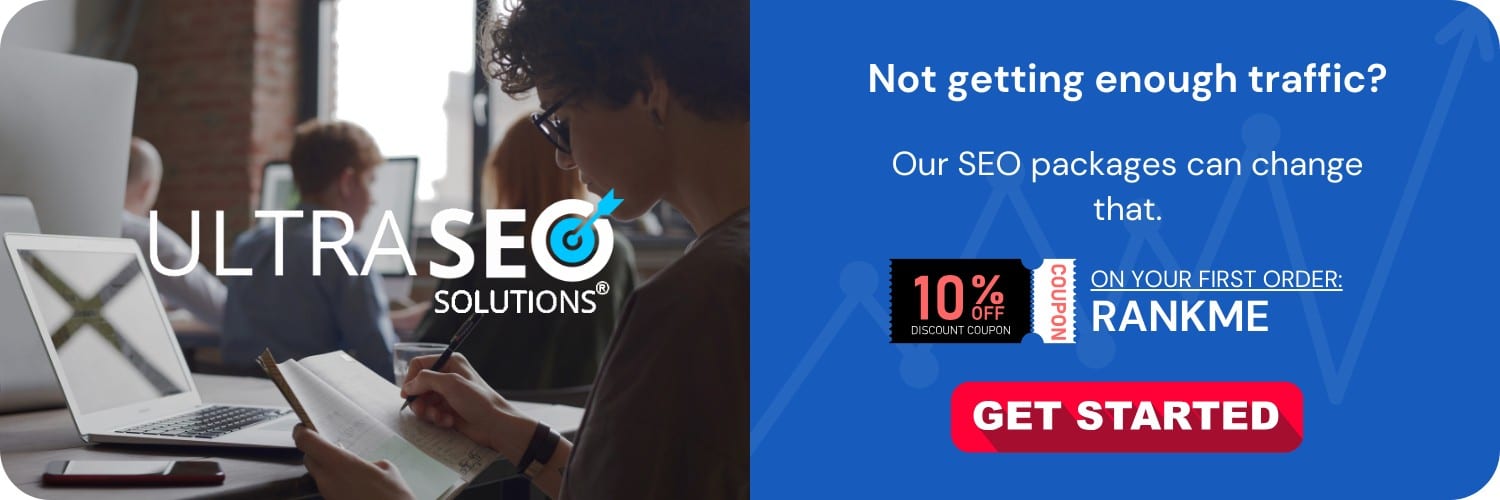
Creating SEO-friendly videos involves optimizing your content to be easily discoverable by search engines and appealing to your target audience. This requires considering factors such as the video’s title, description, and tags, the quality of the content, and the engagement it can attract. By strategically using keywords and providing value within your videos, you can enhance their visibility and reach on platforms like YouTube and Google.
Focusing on Video SEO: Why It’s Crucial
SEO isn’t only for text-based content; it’s equally essential for videos. With the overwhelming amount of video content available online, standing out in the digital crowd and capturing the attention of both viewers and search engines is more challenging than ever. Optimizing your videos for search engines can significantly increase your chances of being discovered by a broader audience, ultimately improving traffic and engagement rates.
Understanding Video SEO
Video SEO is the practice of optimizing your video to be indexed and ranked on the search engine results pages for relevant keyword searches. This involves not just keywords, but also creating engaging and informative content that meets the needs of your audience and encourages sharing and linking.
Starting with Quality Content
Before you begin worrying about the technical aspects of SEO, it’s imperative to have engaging, high-quality content. The best SEO strategies won’t help if your video doesn’t meet the viewers’ needs or provide value.
Knowing Your Audience
Your videos should cater to the interests and needs of your audience. Understanding your audience enables you to create content that resonates with them, increasing user engagement and sharing, which are key factors for SEO success. Conduct audience research to identify topics of interest, questions to be answered, and problems to solve.
Keeping It Compelling and Relevant
Once you have a clear understanding of who your audience is, ensure your video content is both compelling and relevant. Informative and interesting content encourages viewers to spend more time watching, leading to better engagement signals for SEO.
Optimizing Titles, Descriptions, and Tags
Keywords are as vital to videos as they are to webpages. Your video titles, descriptions, and tags should all include relevant keywords that align with what your target audience is searching for. Careful keyword research can uncover terms that have high search volumes but aren’t overly competitive.
Crafting SEO-Friendly Titles
Your video’s title should be clear, descriptive, and include a primary keyword near the beginning. Keep it engaging and concise, with a limit of around 60 characters to ensure it’s not cut off in the search results.
Writing Descriptive and Keyword-Rich Descriptions
A video’s description helps search engines and users understand the content of your video. Provide a detailed description with relevant keywords sprinkled throughout, and include a call-to-action or links to your website or social media channels.
Using Tags Wisely
Tags help categorize your content and guide the search engine algorithms in understanding the topics covered in your video. Use a mix of broad and specific tags, including both short-tail and long-tail keywords that are relevant to your video content.
Incorporating Closed Captions and Subtitles
Closed captions and subtitles make your videos accessible to a broader audience, including the hearing impaired and those who speak different languages. Importantly for SEO, they also provide additional text for search engines to index, making your video more likely to show up in searches.
How Transcripts Boost SEO
Publishing a transcript of your video content on the same page can be incredibly beneficial for SEO. The transcript acts as additional indexable text, which can significantly enhance your content’s visibility in search results.
Driving Engagement
Engagement signals such as likes, comments, shares, and watch time are critical ranking factors for video SEO. Encouraging viewers to interact with your content can lead to better rankings and more visibility.
Creating a Compelling Call-To-Action
A clear call-to-action can drive engagement by prompting viewers to interact with your content by liking, commenting, sharing, or viewing more videos on your channel. Whether you include this at the end of your video or within the content, make it relevant and easy to act upon.
Interacting with Your Audience
Engagement is a two-way street. Respond to comments on your videos and engage with your viewers. This increases the chance of building a community around your content, resulting in higher engagement rates.
Leveraging Social Media and Embedding
Social signals from shares on social media platforms can influence your video’s search rankings. Promote your videos on all your social media channels and encourage your followers to share.
Embedding Videos on Your Website or Blog
Embedding your video on your website or related blog posts can increase the video’s exposure and the time visitors spend on your page, which are positive signals for SEO.
Analyzing and Improving
Monitoring your video’s performance and making data-driven decisions to improve it is crucial. Use analytics tools to track views, engagement rates, and how viewers find your videos, and then use that data to refine your SEO strategy.
The Role of Analytics in Video SEO
Tools like YouTube Analytics can help you understand the behaviors of your viewers and the performance of your videos. These insights allow you to tailor your content and SEO strategies to better match your audience’s preferences.
Testing and Iteration
SEO isn’t a one-and-done deal. Continually testing different titles, descriptions, and calls-to-action can help you understand what works best for your target audience. Use A/B testing to refine your approaches and boost your video rankings.
Finishing Thoughts
Creating SEO-friendly videos is an ongoing process that begins with understanding your audience and delivering high-quality, relevant content. By optimizing video titles, descriptions, and tags, incorporating closed captions, driving engagement, leveraging social media, embedding your content strategically, and analyzing performance data, you can significantly improve your videos’ SEO. Keep in mind that SEO strategies evolve over time, so staying informed and adapting your tactics are the keys to long-term success.
Frequently Asked Questions
What makes a video SEO-friendly?
A video is considered SEO-friendly when it is optimized for better visibility on search engine results pages (SERPs). Several factors contribute to this, including the video title, description, tags, video quality, captions, transcript, thumbnail, and engagement metrics such as likes, shares, and comments. Additionally, ensuring that the video content is relevant and provides value to the intended audience can also improve its SEO performance.
How can I optimize my video title for SEO?
Your video title should be engaging and include relevant keywords that your target audience is likely to use during their search queries. Keep it concise but descriptive, and try to place the most important keywords at the beginning of the title. However, avoid keyword stuffing as it can be penalized by search engines and turn viewers away.
What should I include in my video description for better SEO?
Write a detailed and keyword-rich description that accurately summarizes the video content. Include a brief overview, relevant keywords, and what the viewer will learn or gain from watching the video. You can also add links to your website, social media profiles, or other videos, and a call-to-action. Keep the most vital information and keywords in the first two lines to ensure visibility without the need to click ‘show more.’
Are video transcripts necessary for SEO?
Yes, video transcripts can significantly enhance SEO as they provide additional text content that search engines can crawl. Transcripts make your video accessible to a larger audience, including those who are deaf or hard of hearing, and viewers who prefer reading over watching. They also allow you to include more relevant keywords in the video content.
How do tags affect video SEO?
Tags help search engines understand the content and context of your video. Use a mix of broad and specific tags that include relevant keywords. While tags are not as influential as titles and descriptions, they still play a crucial role in helping your video get discovered by the right audience.
Why is the video thumbnail important for SEO?
A compelling thumbnail acts as a mini-poster for your video and can affect your click-through rate, which in turn impacts SEO. Use high-quality, clear, and engaging images that give an accurate representation of the video content. Including text overlay with keywords can also be helpful, as long as it’s readable and not too cluttered.
How can I measure the SEO success of my videos?
You can measure the SEO success of your videos through various metrics such as view counts, watch time, user engagement (likes, shares, comments), and click-through rates. Also, tools like YouTube Analytics can provide insights into how viewers are discovering your videos, which can help you fine-tune your SEO strategy. Additionally, check your video’s ranking for targeted keywords in search results.
Can embedding videos on my website improve SEO?
Yes, embedding videos on your website can contribute to SEO in several ways. It can increase the time visitors spend on your site, which is a positive signal to search engines. It also makes your site more engaging and can lead to more shares and backlinks. Ensure you optimize video placement on your site and include relevant metadata to maximize SEO benefits.
Do video captions have an impact on SEO?
Captions can positively impact your video’s SEO by providing additional text that search engines can index. They improve the user experience by making the video content accessible to non-native speakers and those watching without sound. Search engines favor content that enhances user experience, which can result in higher SERP rankings for your videos.
What is the role of audience engagement in video SEO?
Audience engagement is a critical component of video SEO. A high level of engagement signals to search engines that your content is valuable and relevant to viewers. Encourage users to like, comment, share, and subscribe to your channel. Respond to comments and foster a community around your videos. This activity can boost your video’s visibility in search engines and recommended video feeds.






